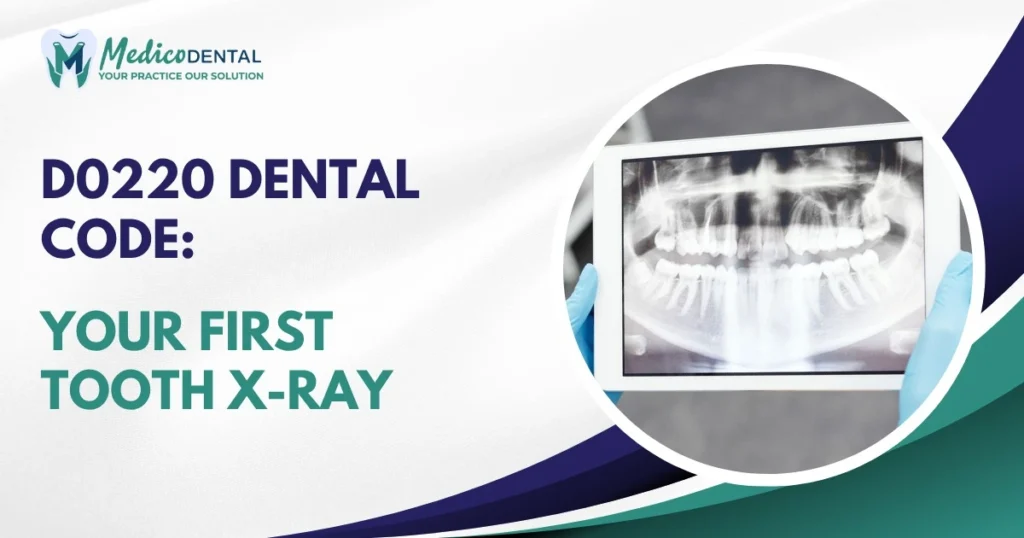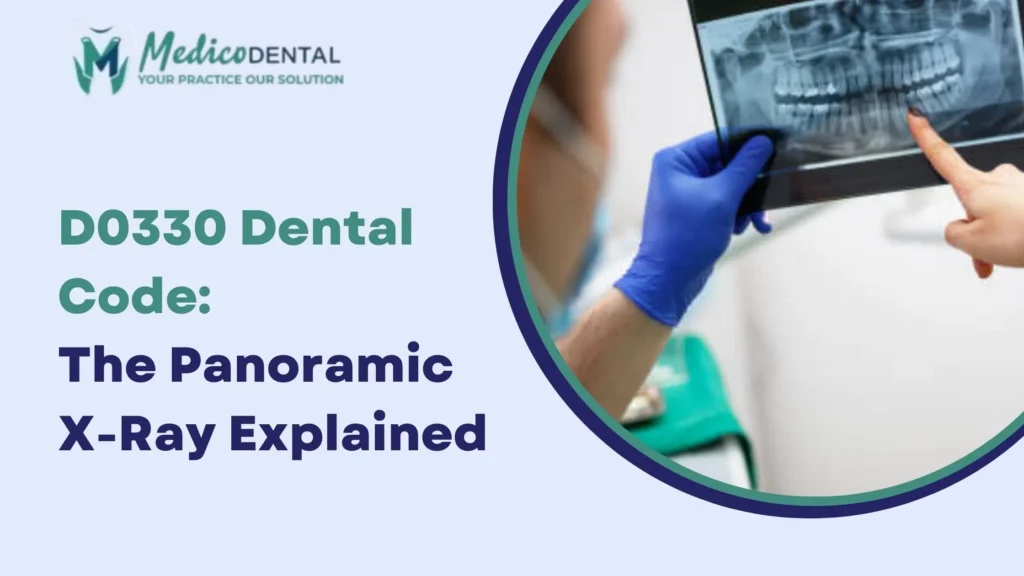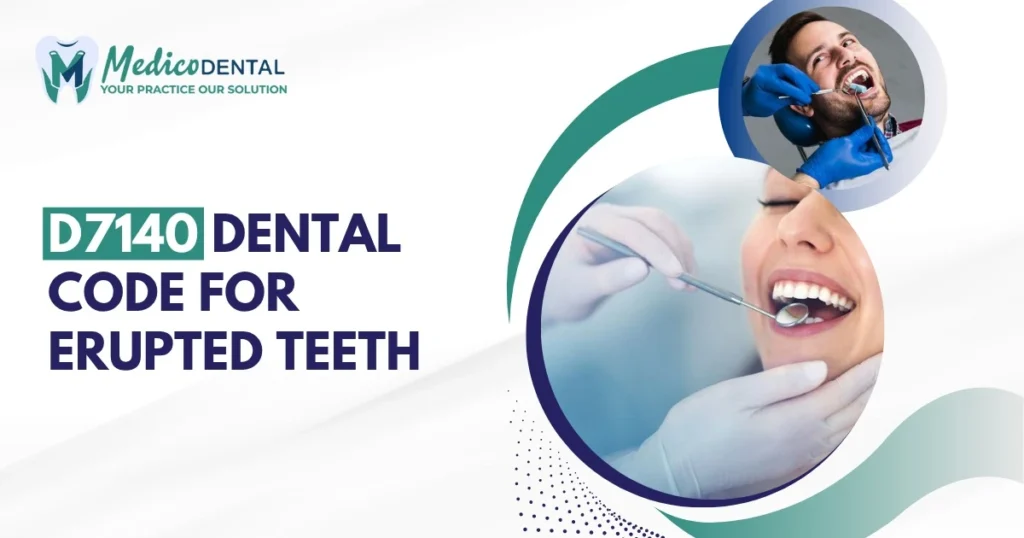The D0220 dental code plays a crucial role in modern dental diagnostics. It is used for a specific type of X ray the intraoral periapical radiograph which provides detailed images of a tooth and its surrounding bone structure. Understanding this dental code, its uses, billing, and key features will help both dental professionals and patients navigate its significance in everyday dental care. Below is a detailed breakdown of the D0220 dental code and its uses.
What is the D0220 Dental Code?
Definition and Purpose
The D0220 code refers to an intraoral periapical radiograph, a type of X ray that focuses on a single tooth and its surrounding bone structure. The image captures the entire tooth, from the crown (top) down to the root tip, offering detailed insights into issues that might not be visible during a regular dental examination. The primary purpose of the D0220 code is to diagnose problems like tooth decay, infections in the root, or bone loss that could indicate advanced gum disease or infection.
Intraoral vs. Extraoral X rays: Key Differences
Intraoral X rays, such as the D0220, are taken with the X ray sensor placed inside the patient’s mouth. This method allows for highly detailed, close up images of individual teeth and their roots. They’re ideal for diagnosing localized issues like cavities, infections, or fractures. In contrast, extraoral X rays are taken outside the mouth, usually to assess broader areas like the jaw, skull, or sinuses. While intraoral X rays provide a high level of detail about a specific tooth, extraoral X rays are better suited for broader views of the dental and facial structures.
Periapical Explained
The term “periapical” refers to the specific type of X ray where the image captures not just the visible part of the tooth (the crown) but also the root and the bone that surrounds the tooth. This gives dentists a comprehensive view of the tooth’s health, helping them diagnose issues such as infections in the root, bone loss, or fractures. The D0220 code is specifically for the first periapical X ray taken in a visit, allowing the dentist to fully assess the condition of the tooth and its supporting structures.
When is D0220 Used in Dentistry?
Diagnosing Decay and Infection
The D0220 code is frequently used to identify tooth decay and root infections. While a visual exam can reveal surface level cavities, deeper issues such as infections or abscesses in the root often require the detailed imagery provided by a periapical X ray. This X ray helps dentists detect problems early before they cause significant damage or discomfort to the patient.
Evaluating Root and Bone Health
One of the primary uses of the D0220 is to assess the health of the tooth’s root and the surrounding bone. By capturing the entire tooth from crown to root tip, the periapical X ray allows dentists to see if there is any bone loss around the tooth. Bone loss can indicate the presence of gum disease or other underlying health issues that might not be immediately visible during a routine check up.
Detecting Fractures and Other Issues
The D0220 X ray is also used to detect fractures that may be invisible to the naked eye. For example, if a patient experiences trauma to a tooth, the X ray can help reveal hairline fractures or other structural issues that may affect the tooth’s long term health. Early detection of these fractures can prevent more serious dental problems in the future.
Key Features of D0220 Dental Code
Tooth Number Requirement for Billing
When billing for a D0220 X ray, the tooth number must be included in the claim. This is a mandatory requirement for the billing process, and failure to include the tooth number can result in the denial of the claim. Dentists must ensure that the tooth being X rayed is properly documented in their dental billing information to avoid any administrative errors.
Frequency and Limitations
The D0220 code is typically used for one X ray per tooth per day. If additional X rays of the same tooth are taken during the same visit, the D0230 code is used for each subsequent X ray. This distinction ensures that the billing process accurately reflects the number of X rays taken during a visit. Patients may also be limited in the number of times the D0220 code can be billed in a given period, depending on their dental insurance plan.
Comparison with Other Radiographic Codes
While the D0220 code specifically applies to a single periapical X ray, it’s important to distinguish it from other common dental X ray codes. For instance, the D2740 Dental Code refers to a porcelain crown for a tooth, which is commonly used in restorative procedures, such as when a tooth has been severely damaged by decay or trauma. In contrast, D0220 is focused on capturing a detailed view of the tooth’s structure via an X ray, while D2740 deals with the restoration of that structure. Additionally, D0210 is used for a complete series of X rays, which captures a broader view of the entire mouth. The D0220, being more localized, provides highly detailed images of individual teeth and their surrounding bone structure, making it an essential diagnostic tool for certain dental conditions.
How to Properly Bill for D0220
Billing Process and Documentation
To correctly bill for the D0220 code, dental offices must follow a specific process. The patient’s tooth number, the date of the X ray, and any relevant medical history should be documented. It’s essential to ensure that the correct procedure codes are used to avoid any discrepancies in billing. Additionally, proper documentation of the patient’s treatment plan and X ray findings should accompany the claim to demonstrate the necessity of the procedure.
Common Billing Mistakes to Avoid
One common mistake when billing for D0220 is forgetting to include the tooth number, which can result in the claim being rejected. Another mistake is incorrectly using the D0220 code for multiple X rays of the same tooth on the same day. For additional X rays, the D0230 code must be used. Dentists should also verify that the patient’s insurance covers the procedure before submitting the claim, as some plans may have limitations on the number of periapical X rays they will reimburse for in a given period.
D0220 vs. D0230: What’s the Difference?
Overview of D0230 Code
The D0230 code is used when a second or additional periapical radiographic image is taken during the same dental visit. If multiple periapical X rays are required for a single patient during one visit, the D0220 code should be used for the first image, while D0230 is used for any subsequent X rays. Like the D0220, D0230 focuses on the detailed view of a single tooth, including the crown, root, and surrounding bone, but it’s for images taken in addition to the first.
When to Use D0220 and When to Use D0230
Use the D0220 code when performing the first intraoral periapical X ray of a tooth in a single visit. If a second periapical X ray of the same tooth is needed, then the D0230 code should be used. This distinction helps ensure that the correct dental billing practices are followed, as well as ensuring that the radiographs are properly documented and reimbursed.
For example, if a dentist takes an initial X ray to evaluate a tooth, they would bill the D0220 code. If a follow up X ray is needed to view a different angle or provide additional detail of the same tooth, they would bill the D0230 code. These codes are not interchangeable, and proper usage helps prevent billing errors.
D0220 in Dental Procedures
Role in Routine Dental Checkups
The D0220 code plays a vital role in routine dental checkups, particularly when a more detailed image of a specific tooth is needed. Dentists may use this code to assess areas that are not easily visible during a visual examination, especially when checking for decay, root infections, or damage to the tooth and its surrounding bone. This code ensures that the dentist has the necessary information to make accurate assessments and develop a comprehensive treatment plan for the patient.
Use in Treatment Planning and Diagnosis
In treatment planning, D0220 is essential for diagnosing issues that may require more than just a basic visual inspection. For example, if a dentist suspects root infection or bone loss around a tooth, they’ll often use a D0220 periapical X ray to evaluate the full extent of the problem. This code helps clinicians not only diagnose issues but also plan effective treatments, whether it’s a root canal, extraction, or bone grafting procedure. Early detection of these problems can result in less invasive and more cost effective treatments.
Conclusion
In conclusion, the D0220 dental code is an important tool in diagnosing and treating a variety of dental issues. It allows for a detailed and localized view of a tooth, helping dentists detect problems like decay, fractures, root infections, and bone loss. By distinguishing between the D0220 and D0230 codes, dental professionals can ensure accurate billing and avoid mistakes. Whether you’re a dentist or a patient, understanding these codes can enhance both treatment planning and the overall quality of care. Proper use of the D0220 X ray helps in early diagnosis, which is key to providing effective dental treatment.
FAQs
Can D0220 be Used for Multiple X rays in One Visit?
Ans. No, D0220 is used only for the first periapical X ray taken during a visit. If additional X rays are needed for the same tooth, the D0230 code should be used for each subsequent X ray. This ensures that the billing process is accurate and reflects the number of images taken. It’s important to note that these codes apply only to periapical X rays, not other types like bitewings or panoramic X rays.
How Often Can D0220 Be Used?
Ans. The D0220 code can typically be used for one X ray per tooth per visit. However, there are limitations based on the patient’s insurance coverage and the specific dental procedure. If multiple periapical X rays are needed during the same visit, the D0230 code should be used after the initial D0220 image. Additionally, the frequency of D0220 use may be limited by the patient’s dental plan or medical necessity, and the dentist will need to ensure that the procedure is justified for each individual patient.



